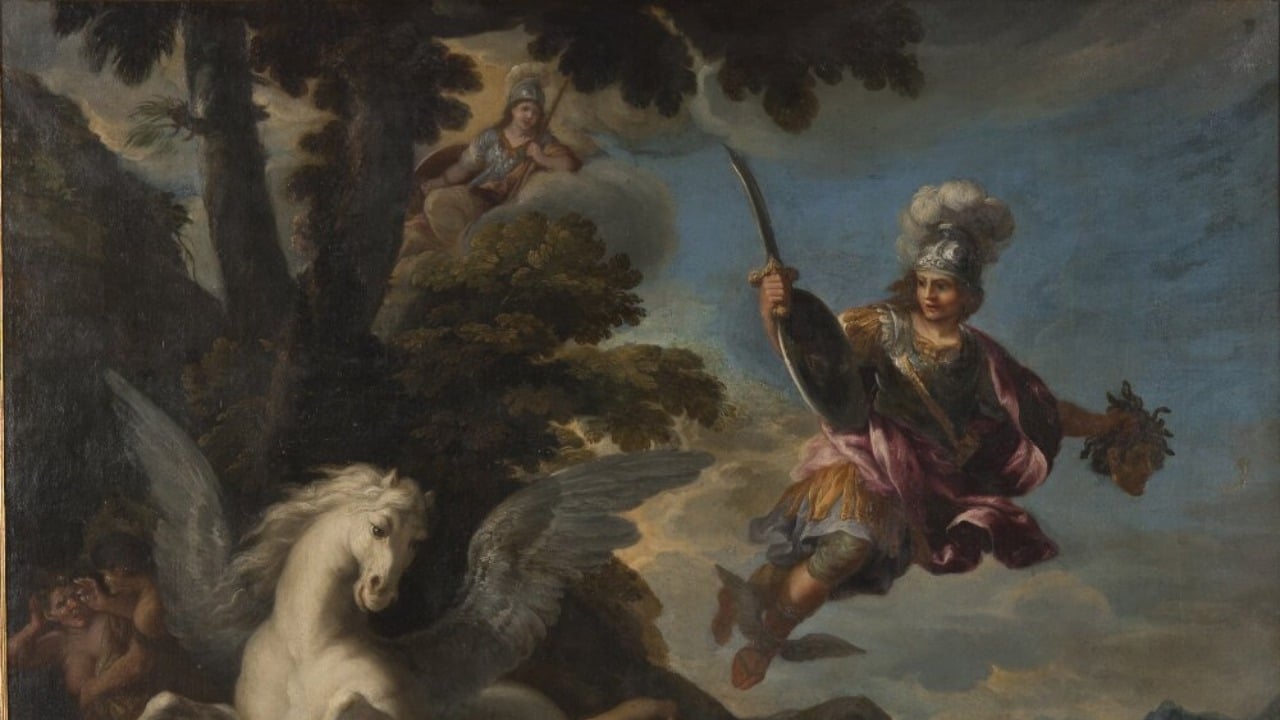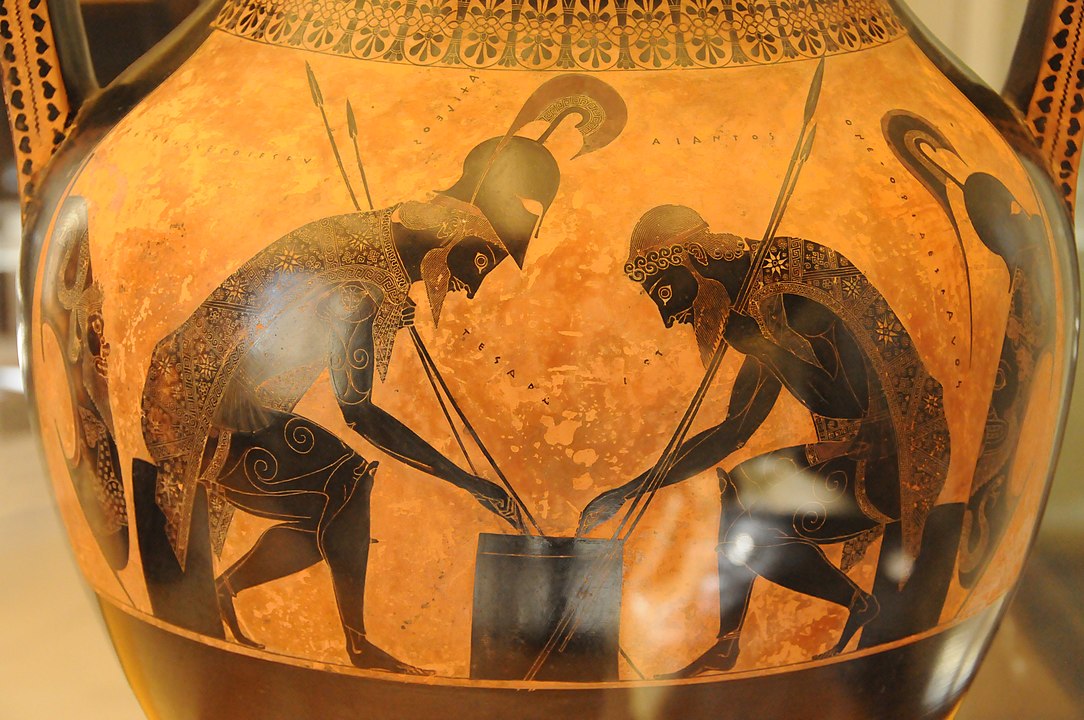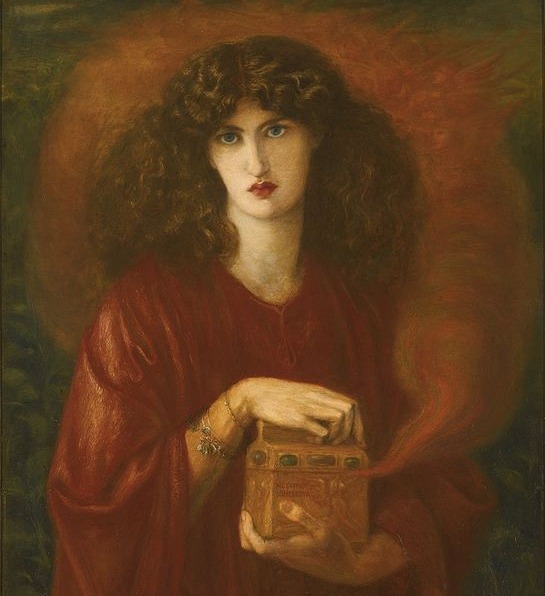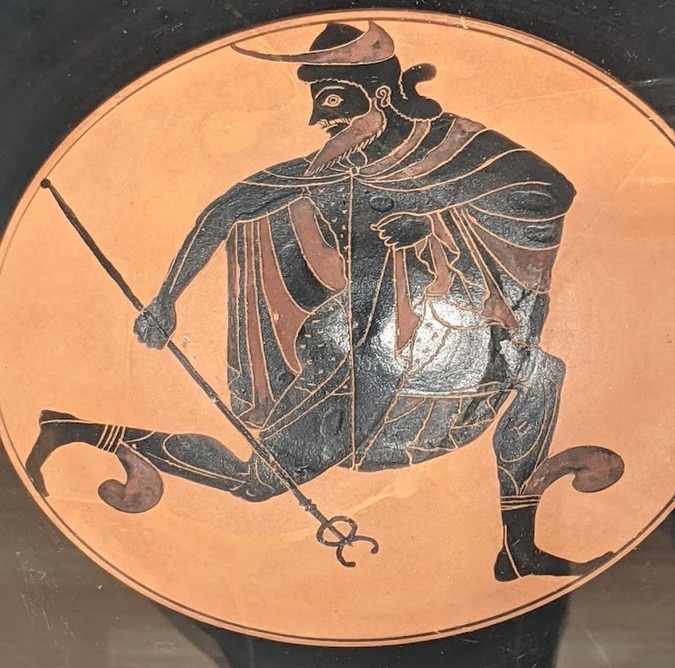
Greek mythology is full of artifacts endowed with supernatural powers, in addition to a myriad of unforgettable gods, demigods, creatures, and characters.
These items are immensely varied. Some, like the coat of the Nemean Lion, offered its wearer invulnerability, whereas others, like Pandora’s box, spelled misery and doom for mankind.
In many stories, these mythical items were the object of a hero’s quest or proved essential to the completion of their goal. In others, the artifact came to be a symbol of its user and the attributes they embodied.
The Armor of Achilles
Towards the end of Homer’s Iliad, Patroclus, the cousin of Achilles, donned his armor and led the Myrmidons into battle. In the ensuing fight between Achaeans and Trojans, Patroclus was killed, largely due to the intervention of the god Apollo.
Hector landed the killing blow and stripped Patroclus of Achilles’ armor. Furious at the death of his companion, Achilles burned with the desire for revenge but could not go into battle without his armor.
Luckily for Achilles, his mother Thetis was respected by the Olympian gods and she persuaded the forge god Hephaestus to make Achilles a new set of armor. Homer describes the armor as being “brighter than blazing fire” and dedicates several pages to describing it.
Ultimately, the armor protected Achilles long enough for him to exact his vengeance against Hector and the Trojans. It did not however render him immune to fate itself, and he was struck dead when an arrow hit his vulnerable heel.

Poseidon’s trident
The trident of Poseidon, the god of the sea, is one of the most iconic artifacts in Greek mythology. Even in modern times, it functions as a potent symbol of all things maritime.
According to mythology, the trident was forged by the cyclopes and given to Poseidon as a gift. The trident, which resembled a fisherman’s fork, was used many times by Poseidon to channel his powers over the earth and sea.
In one such instance, the sea god struck a rock on the hill of the Athenian Acropolis to produce a well of seawater, in what became a contest between himself and Athena for dominion over Attica. When the Athenians chose Athena, Poseidon struck his trident a second time, causing the surrounding lands to dry up, thus depriving the Athenians of water.
In another myth, Poseidon created the first horses, which the ancient Greeks believed were sacred to him, by again striking his trident against the ground.

Pandora’s box
Pandora’s box was arguably among the most important Greek mythological artifacts, given the consequences it would hold for all mankind. Pandora was the first human woman in Greek mythology, created by Hephaestus from clay.
According to Hesiod, the purpose of Pandora’s creation was to punish mankind for the deeds of Prometheus, who had stolen the secret of fire from the gods and given it to humans.
Zeus, wishing to punish humans, deceived Epimetheus – the brother of Prometheus – by gifting him the hand of Pandora in marriage. Pandora brought with her the infamous box, although it would be more accurately described as a jar due to a mistranslation of ancient Greek.
In any case, Pandora was instructed not to open the jar, but curiosity had been woven into her very nature by the gods and she could not withstand this temptation. She opened the jar, letting out death, sickness, and all the evils which plague the world. Only hope remained in the jar. This was Hesoid’s explanation for all the hardships faced by mankind.

Pelt of the Nemean Lion
The first labor of the legendary ancient Greek hero Heracles was to bring King Eurystheus the skin of the Nemean Lion, a legendary mythical artifact that rendered its wearer invulnerable to harm. There was just one problem, the skin was still very much attached to the giant cat terrorizing the hills around Nemea.
When Heracles went up against the mighty Nemean Lion, he found that his arrows were useless against the impenetrable golden fur of the beast. To make matters worse, the lion’s claws could easily cleave a man in half.
Heracles improvised and managed to block the lion inside a cave. Although its golden fur could not be penetrated by any human weapon, the lion was not impervious to blunt force trauma and Heracles stunned it with his club. He then wrestled the lion and strangled it to death.
When Heracles attempted to skin the beast, he found that his knife was useless. It was only when the goddess Athena instructed him to use the lion’s claws that he was able to take the prized golden coat.
Far from pleased, King Eurystheus was terrified that Heracles had managed to kill the beast and instructed him to display all further proofs of his labors outside of the city gates. Heracles wore the coat of the Nemean Lion throughout his other labors, enjoying its superior protection.

The winged sandals of Hermes
The winged sandals of Hermes, known to the Romans as the Talaria of Mercury, are among the most unique artifacts in ancient Greek mythology.
The Greek god of blacksmithing and craftsmen was again responsible for this incredible creation. Hephaestus was said to have made the sandals out of imperishable gold. They conferred on the wearer the ability to fly.
Doubtless, the ability to fly was essential for the messenger god Hermes who spent his time flitting between gods, demigods, and mortals, passing on the most urgent of messages.
The hero Perseus briefly possessed the sandals and wore them during his quest to behead Medusa.

Artifacts in Greek mythology: The Golden Fleece
The Golden Fleece is one of the most famous and iconic artifacts from ancient Greek mythology. According to legend, the fleece was the skin of a golden ram, which was given to the king of Colchis, a land located on the eastern shores of the Black Sea, by the god Hermes. The fleece was said to possess magical powers, and it became the focus of a number of heroic quests.
The most famous of these quests was undertaken by Jason and the Argonauts. According to the story, Jason was tasked with retrieving the Golden Fleece as a condition for him to claim the throne of Iolcus. He assembled a team of skilled warriors and set out on a perilous journey across the sea, encountering a variety of challenges and obstacles along the way.
After many adventures, the Argonauts finally arrived in Colchis, where the fleece was guarded by a dragon. With the help of the sorceress Medea, Jason was able to overcome the dragon and claim the fleece. He then returned to Iolcus, where he was able to claim the throne and establish himself as a hero of legend.
See all the latest news from Greece and the world at Greekreporter.com. Contact our newsroom to report an update or send your story, photos and videos. Follow GR on Google News and subscribe here to our daily email!



